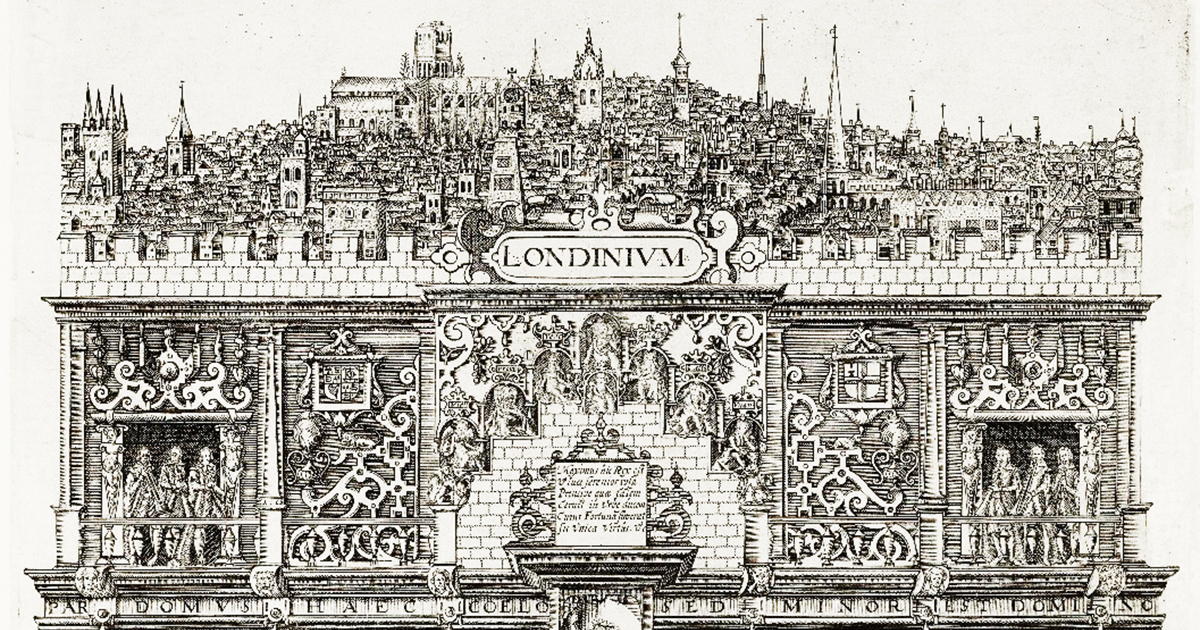Echoes of 1613 are felt, even today

LAWRENCE — Some years are more momentous than others. 1968. 1776. 1492. Just mentioning them brings to mind major historic events.
 In his new book, “Shakespeare’s London 1613” (Manchester University Press, 2017), University of Kansas Professor Emeritus of English David Bergeron argues that 1613 was just such a year, chock-full of happenings that echo down through the ages, even unto today.
In his new book, “Shakespeare’s London 1613” (Manchester University Press, 2017), University of Kansas Professor Emeritus of English David Bergeron argues that 1613 was just such a year, chock-full of happenings that echo down through the ages, even unto today.
Among the highlights: The Bard’s Globe Theatre burned to the ground; he bought a house in London; several of his plays were performed in court for King James (in an attempt to assuage the royal household’s grief over the then-recent death of the heir apparent, Prince Henry), and Princess Elizabeth wed a German prince and went to live on the continent, exacerbating the prospective succession struggle.
The year 1613 was also unprecedented, Bergeron said, for interaction between the royal court and the common people of London. There was a royal procession from the palace to one of the powerful guild houses. And the king and his court were borrowing money from the growing mercantile class to which the guilds gave rise.
In Bergeron’s narrative, these commoner-court relationships are symbolized by Blackfriars Gatehouse, the home Shakespeare bought, and Holbein Gatehouse on the palace grounds, wherein resided the Duke of Lennox, cousin and confidant of King James.
Bergeron’s new book is just the latest in a career filled with scholarship on the Jacobean period, including “King James and Letters of Homoerotic Desire” (University of Iowa Press, 1999) and “Royal Family, Royal Lovers: King James of England and Scotland” (University of Missouri Press, 1991).
As 1613 starts, the royal court is in mourning for Prince Henry, who died at age 18 late the previous year.
“Henry was vigorous,” Bergeron said. “He had been totally idealized culturally. He was more disciplined than his father. He was very Protestant, and they were hoping he would create a kind of pan-Protestant Europe.”
This problem of succession had been roiling England for decades, Bergeron said.
“James is the first English monarch in almost a century who had children,” he said. “All of them had been problematic since Henry VIII … because they were all from different mothers … James brought with him three surviving children, so everybody could sort of exhale and say, ‘Now we have a clear line of succession.’ Then Henry dies and Princess Elizabeth marries a German prince and goes to live on the continent, so she is effectively removed from succession. That leaves Charles, who is at best sickly. So what had been so secure fell apart, and it changed the direction of the English monarchy forever.”
That can be seen today, Bergeron said.
“What’s interesting about the current Windsor house, they trace their lineage back to Princess Elizabeth, King James’ daughter, and this created the German link to the English crown,” he said. “And so in the 18th century, we get a whole line of Georges who were German, some of whom did not speak English. George III most notoriously, who was king during the American Revolution, was one of them.”
In Bergeron’s telling, London in 1613 was a vibrant place, buzzing with literary and artistic life.
“There was an enormous explosion of population at the beginning of the 17th century, so it was on the verge of becoming a, if not the, major city in Europe,” he said. “I talk about all the books that were published that year and the plays that were performed. London has its own cultural life apart from court, yet they are intertwined.”
The relationship between the royal court and Shakespeare’s world of theatre – the two gatehouses -- symbolized a larger interaction between the noble and commoner classes, Bergeron said.
“There’s a close and symbiotic relationship between the court and the theatre,” he said. “And this goes to my whole perspective in the book about the interconnections between the court and the city of London.”
The year that began in mourning ended on a high note, with the wedding of two aristocrats under the patronage of the king bringing together the royal, merchant and artistic classes.
Robert Carr, the Earl of Somerset, was one of King James’ “favorites,” and Frances Howard was the descendant of a powerful noble and political faction. The two-week celebration of their wedding culminated in torchlit procession to the Merchant Taylors’ Hall, home of one of the 12 principal guilds in London, for an evening of performances.
“It was a wonderful spectacle through the city, all these torches, moving from Westminster and Whitehall through the City of London to the Merchant Taylors’ hall. So again you have city and court, now physically joined.”
Image: Detail from “The arch's of triumph erected in honor of the high and mighty prince. Iames. the first of that name. King, of England. and the sixt of Scotland. at his Maiesties entrance and passage through his honorable citty & chamber of London. vpon the 15th. day of march 1603. Invented and published by Stephen Harrison ioyner and architect: and graven by William Kip.” (London, published in 1613). Folger Shakespeare Library Call #: STC12863a copy 1. Used by permission of the Folger Shakespeare Library.